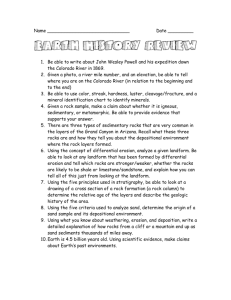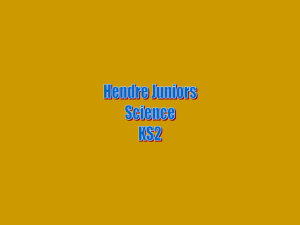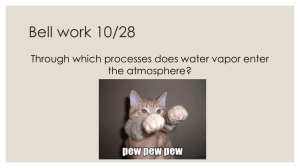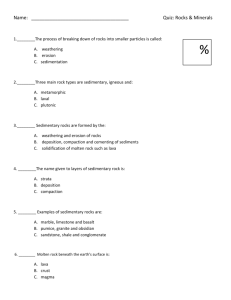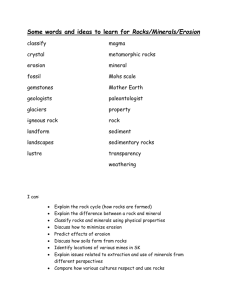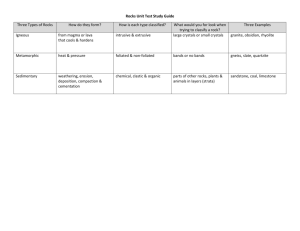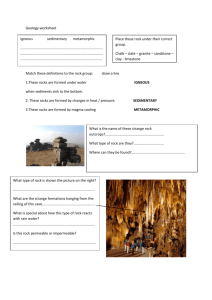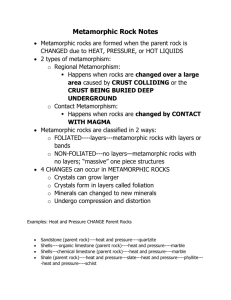Name: Date: ______ Period: ______ 12.1 Discovering Earth`s
advertisement
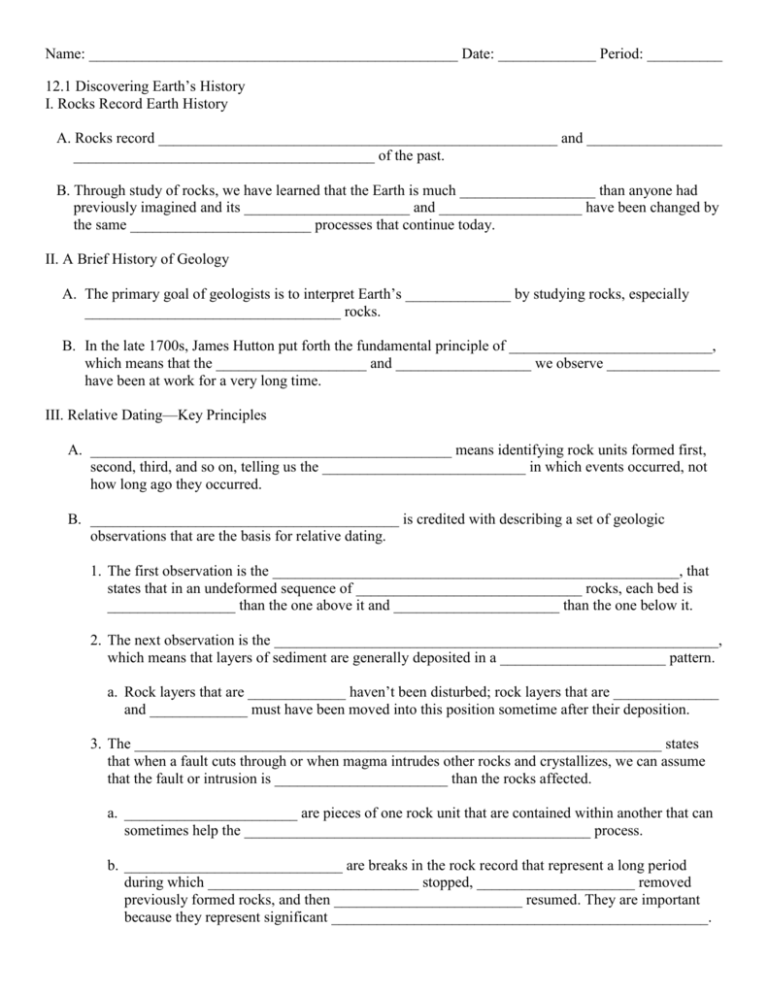
Name: _________________________________________________ Date: _____________ Period: __________ 12.1 Discovering Earth’s History I. Rocks Record Earth History A. Rocks record _____________________________________________________ and __________________ ________________________________________ of the past. B. Through study of rocks, we have learned that the Earth is much __________________ than anyone had previously imagined and its ______________________ and ___________________ have been changed by the same ________________________ processes that continue today. II. A Brief History of Geology A. The primary goal of geologists is to interpret Earth’s ______________ by studying rocks, especially __________________________________ rocks. B. In the late 1700s, James Hutton put forth the fundamental principle of ___________________________, which means that the ____________________ and __________________ we observe _______________ have been at work for a very long time. III. Relative Dating—Key Principles A. ________________________________________________ means identifying rock units formed first, second, third, and so on, telling us the ___________________________ in which events occurred, not how long ago they occurred. B. _________________________________________ is credited with describing a set of geologic observations that are the basis for relative dating. 1. The first observation is the ______________________________________________________, that states that in an undeformed sequence of ______________________________ rocks, each bed is _________________ than the one above it and ______________________ than the one below it. 2. The next observation is the ___________________________________________________________, which means that layers of sediment are generally deposited in a ______________________ pattern. a. Rock layers that are _____________ haven’t been disturbed; rock layers that are ______________ and _____________ must have been moved into this position sometime after their deposition. 3. The ______________________________________________________________________ states that when a fault cuts through or when magma intrudes other rocks and crystallizes, we can assume that the fault or intrusion is _______________________ than the rocks affected. a. _______________________ are pieces of one rock unit that are contained within another that can sometimes help the ______________________________________________ process. b. _____________________________ are breaks in the rock record that represent a long period during which ____________________________ stopped, _____________________ removed previously formed rocks, and then _________________________ resumed. They are important because they represent significant __________________________________________________. 1. The three basic types of unconformities are _________________________________________ ______________________________, _________________________________________, and __________________________________________. 2. The most recognizable unconformity is an _____________________ unconformity, which appears as _______________________ or _____________________ sedimentary rocks that are overlain by younger, more flat-lying stata (layers); this indicates that during a pause in deposition, a period of __________________________ (folding or tilting) and ________________________ occurred. 3. A ___________________________ is where two sedimentary rock layers are separated by an erosional surface; they are more common than angular unconformities, but are harder to recognize. 4. A _____________________________ is where the erosional surface separates older metamorphic or intrusive igneous rocks from younger sedimentary rocks. IV. Correlation of Rock Layers A. Matching up rocks of similar age in different regions on Earth is called ________________________. B. No single _________________________ contains the entire sequence, but correlation reveals a more complete picture of the _______________________________ rock record. C. When trying to correlate rocks in areas separated by great distances, __________________ come into play. Reading Checkpoints & Interpreting Illustrations/Diagrams 1. In Figure 2B (p. 338), which layer is the youngest? ______________________________________ youngest? ______________________________________________ 2. What rock type can the law of superposition and the principle of original horizontality be best applied? ______________________________________ 3. In Figure 4 (p. 339), which is older, the batholith or Fault B? ________________________________ 4. In Figure 8 (p. 341), which site has the oldest exposed rocks? __________________________________ Classwork Due Today With This Sheet: p. 342 #1-6
